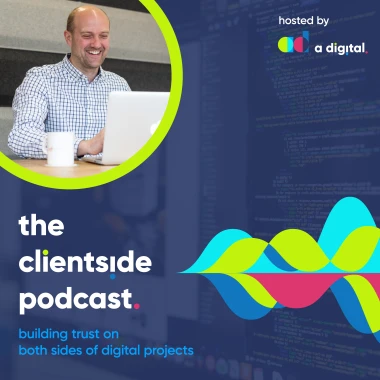
Business Story Telling With Steve Rawling
The Clientside Podcast
51 min Steve Rawling
Andrew Armitage talks to former BBC TV journalist and Business Story telling expert Steve Rawling about what Business Story telling is and how a story can be used for a positive impact.
We discuss how telling a story and sharing both the positive and negative business experiences allows those listening to relate and learn more about who you really are as a business.
We look at how having clarity over who your audience is and not speaking in the abstract can enable you to reach potential leads easier.
Listen on your smart device or read the transcript below
I don't think there are any facts for trust. I think it's stories that carry trust.
Steve Rawling Tweet

